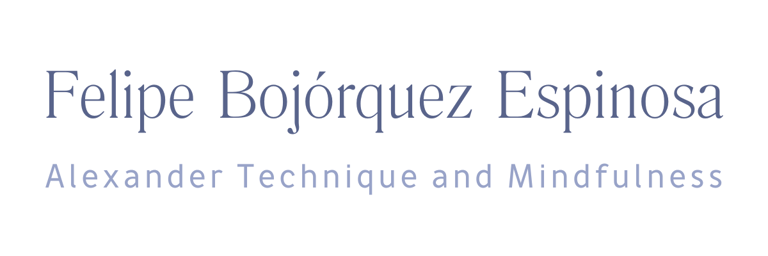Body Image and Music: How Our Beliefs Influence Practice
NEUROSCIENCE AND ANATOMYEDUCATIONFLUTE
Felipe Bojórquez
Body image: a key factor in musical practice
We all hold certain preconceived ideas about the human body—ideas gathered with or without conscious study—that form our own body image. This mental picture not only shapes how we perceive ourselves, but also how we move and relate to the instrument we play.
Our body image is influenced by how we perceive the world around us: observing others, understanding how tools function, and internalizing the physical laws that govern balance and movement. Just as gravity affects the fall of an object, our perception of the body is shaped by similar natural laws that seem to apply to everything. We feel that we too are subject to these same principles.
Beliefs and expectations: how they affect our relationship with the instrument
Throughout our musical journey, we encounter countless ideas—shared in casual conversations, books, or advice from other musicians—about what “correct posture” means, how the body should move, or how to “relax” to avoid injuries. We often absorb this information without questioning it, weaving it into our body image.
Before we even study these matters consciously, we have already accumulated a vast collection of beliefs about the body—some accurate, others not so much. Among them hide myths and misunderstandings that affect not only our technique but also our health. This leads to an essential question: How important is it to understand body image in the context of music?
If we could approach our body with complete innocence—free of preconceived images or expectations—perhaps we could play without emotional or physical interference. What is certain, however, is that false ideas about the body are dangerous and tend to reinforce themselves. The way we move, how we feel while playing, and the postures we adopt are largely governed by our internal image of the body. This directly influences how we play, how we physically feel during performance, and how we perceive the music we are creating.
How our beliefs shape our physical perception
Body image is deeply connected to learning and to our experience of the present moment. Movements that go against the body’s true design lead to unnecessary strain and, over time, to tension, pain, or injury. When our body image carries inaccurate information, it can harm not only our technique but also our health.
It’s essential to distinguish between body image and body schema. Though related, they refer to different aspects of our embodied experience. The body schema is largely unconscious and linked to the sensory awareness of movement, while body image is our more conscious perception of our body—how we see ourselves and how we believe others see us. For musicians, this directly affects how we position ourselves with the instrument, how we manage movement, and how we inhabit the stage.
Throughout our lives, these beliefs are stored in different areas of the brain, particularly those related to memory and motor control. These patterns are as tangible as the neural connections that sustain them—and they update constantly through experience and learning. Many of our perceptions of how we move, how relaxed we are, or how efficiently we play are deeply shaped by these learned beliefs.
Beliefs and attitudes
To understand how this works, it helps to look briefly at how the brain is organized. The cerebral cortex, the outermost layer of the brain, handles advanced functions like vision, movement, and planning. For musicians, the regions involved in motor coordination are in constant communication with the rest of the brain, allowing beliefs and expectations about the body to influence how we interpret sensory feedback during performance.
The brain operates largely through prediction. Each time we play, it compares the incoming information with its prior expectations—how the instrument should sound, how movement should feel, or how we should be positioned for optimal tone. Over time, the brain fine-tunes these predictions to make us feel comfortable. However, when our beliefs about posture or movement conflict with reality, they can distort this calibration, limiting our ability to adjust effectively.
This is why the relationship between body image and musical practice is so important: when our inner image is distorted, our playing inevitably reflects that distortion.
Improving our relationship with the body and the instrument
For most people, these beliefs begin to form during adolescence, when the body is developing rapidly. By adulthood, they become deeply ingrained and difficult to change. Yet for musicians, it’s crucial to recognize that these beliefs may not align with the body’s actual structure. For instance, even if we’ve corrected our posture, our idea of what “good posture” looks or feels like might remain outdated, creating an ongoing conflict between mind and body.
The key to overcoming this lies in developing deeper, more honest observation of what we truly feel while playing. Somatic education methods—such as the Alexander Technique—are invaluable here. They help us re-educate our perception, replacing abstract notions of “right” and “wrong” posture with a lived understanding of balance, freedom, and coordination.
It’s not about conforming to stereotypes or visual ideals of how a “correct” posture should look, but about refining our body image through awareness—allowing the sensations we experience while playing to guide our movements in a more informed, natural, and effortless way.
Our body image shapes everything we do in deeper ways than we realize. Understanding how our beliefs about the body influence our playing is essential for avoiding unnecessary tension and enhancing both performance and well-being.
References:
Blakeslee, S. & Blakeslee, M. (2008). The Body Has a Mind of Its Own
Burchatt, E. F. (1999). Mind and Muscle: An Owner’s Handbook
Related articles
Well-balanced flutist
Alexander Technique and Mindfulness in everyday musical practice.
Specialized support for high-performance flutists and flute students.
© 2025. All rights reserved. Privacy policy.
Menu:
Lessons
About me
